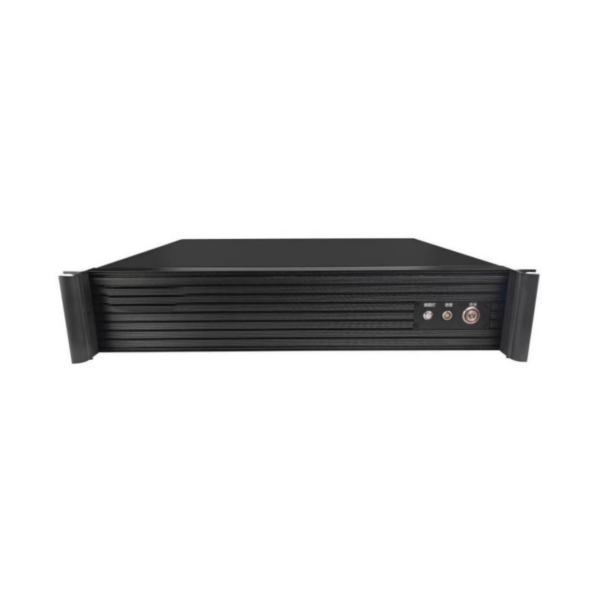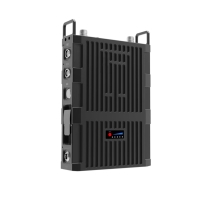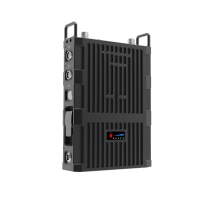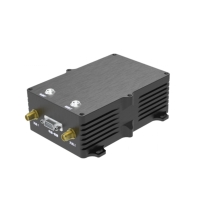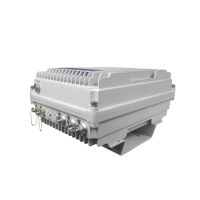Vehicle-mounted Self-organizing Network Radio MF6200C-20
Category: Self-Organizing Network Image Transmission Base Station
Datasheet contact
The vehicle-mounted ad hoc network radio is designed for the standard 2U rack structure of the vehicle-mounted system. It is mainly used for modified special communication command vehicles and rack-mounted installation in large mobile command vehicles. The equipment has the function of ad hoc network communication. It can communicate with its own fleet, and can also interconnect with individual equipment, handheld devices, air carriers (helicopters or drones) and surrounding base stations to quickly establish a link communication. All nodes are in line-of-sight or non-line-of-sight environments, without the need for a central gateway. All nodes are equal in status, that is, they can be used as terminal nodes, relay nodes or central nodes, and can quickly establish a wireless communication network without relying on wired communication lines. It is particularly suitable for the application of central communication command vehicles and mobile vehicle marshaling, and can play a powerful role in emergency response, anti-terrorism and riot prevention, disaster relief, large-scale event support, temporary deployment and relay transmission. The transmission distance can reach more than 20km in an open ground environment, 1-5km in a blocked environment (depending on the blocking environment), and more than 100km from air to ground.
* Networking without a center: nodes are equal in status and can be used as terminal nodes, relay nodes or central nodes
* Networking with any structure: nodes automatically identify and select the optimal route for bandwidth data
* Security and confidentiality: through layer-by-layer encryption such as working frequency, carrier bandwidth, scrambling code, etc., support DES encryption
* Anti-interference and anti-destruction: using COFDM, MIMO, ARQ and other technologies to improve data bandwidth and anti-interference performance
* Flexible networking of multiple nodes: according to channel quality, rate, error code and other indicators, link routing is automatically calculated and networked flexibly
| Operating frequency | 180~2300MHz, adjustable in 1MHz | |||||||
| Carrier bandwidth | 5/10/20MHz, self-adaptable | |||||||
| Transmission system | COFDM | |||||||
| Modulation mode | BPSK/QPSK/16QAM/64QAM (adaptive) | |||||||
| Transmission capacity | Peak rate 52Mbps@20MHz, optional version up to 100Mbps | |||||||
| Transmit power | 20W | |||||||
| Receive sensitivity | -103dBm@5MHz> | |||||||
| Video input | Support IP network video input (HDMI/AV needs to be customized) | |||||||
| Networking | Networking capability | ≥64 nodes | ||||||
| Networking hop count | >10 hops | |||||||
| Network topology | No center network, star network, chain network, mesh network, etc. | |||||||
| Encryption method | DES/AES128/AES256 (optional) | |||||||
| Power supply | AC220V | |||||||
| Power consumption | ≤180W | |||||||
| Device interface | ||||||||
| Antenna interface | N-K×2 | |||||||
| Beidou interface | Multiplexing serial port | |||||||
| WIFI interface | SMA-K | |||||||
| Ethernet interface | Aviation plug connector | |||||||
| Audio interface | Aviation plug connector (Front panel supports microphones, back panel supports headphones or mixers) | |||||||
| Serial port interface | Aviation plug connector | |||||||
| Power interface | Aviation plug connector | |||||||
| Physical indicators | ||||||||
| Device size | ≤485×387×90mm | |||||||
| Device weight | ≤8.5kg | |||||||
| Operating temperature | -40℃~+65℃ | |||||||


